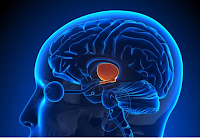
April is Stress Awareness month!
Throughout this month we aim to share
some tips on helping to understand stress and what you can do to help balance
this. Today we're focusing on understanding the 'Stress Response' and techniques to help you find a balance.
Stress and the Physiological Response
Most of us are familiar with the
'fight or flight' response, but what actually happens in our bodies when we
experience stress?
Once a threat or danger is perceived,
the amygdala interprets it and immediately sends a distress signal to the
hypothalamus. The hypothalamus activates the sympathetic nervous system and
sends signals to the adrenals. The adrenals then start pumping out adrenaline,
and this travels throughout the body bringing many physiological changes such
as increased blood flow, oxygen, heightened senses, energy and more.
What affect does this have on various
organs?
As adrenaline (epinephrine) rushes through your body, it triggers many responses and
affects to areas of the body. Your pulse and blood pressure will go up, the
blood vessels in your muscles will dilate, airways in the lungs will dilate too
and allow more oxygen in. This affects the brain and increases your alertness
and your senses will also be heightened. Glycogen will be converted to glucose
quickly and released around the body for energy. Whilst this is all happening
and the blood is increased for the areas needed, the body will also experience vasoconstriction in other areas, to better use the energy/blood supply. You digestive
system is a good example, during fight or flight your blood vessels within your
digestive system will constrict, delaying the break down and digestion.
This is useful should you find yourself under attack or needed to act quickly,
however this also happens when we are experiencing day to day stressors.
The HPA axis (hypothalamus,
pituitary and adrenals) keeps things ticking - releasing other hormones
such as cortisol keeping the body alert and ready if the brain is
still perceiving a threat.
Once the threat is gone, the cortisol
levels fall and the parasympathetic nervous system comes into play, dampening
the stress response.
Stress and the effects on the body
You can find an animated TedEd
video here, detailing how stress affects our body.
We are all aware that stress can have
a negative impact on many aspects of our physical and mental body and
whilst this is important to be aware of, it is equally important - if not more
- to know ways to help balance out our stress responses. We cannot avoid
stress, it is part of our day to day lives and sometimes we need it - it's when
we experience an excess of stress that it can become a problem. It's
important to learn tools to help us deal with stress better and manage it
correctly.
We also want to share this video from
Braive, which includes a helpful analogy click here.
So, what can we do?
 The main thing we want to aim for is
to trigger the parasympathetic system by going through the relaxation
response.
The main thing we want to aim for is
to trigger the parasympathetic system by going through the relaxation
response.
Relaxation Techniques
Some of the most useful and
researched 'relaxation response' methods include diaphragmatic breathing,
meditation, repetitive prayer/word or yoga and tai chi.
Exercise and Movement
Regular exercise is hugely beneficial
in reducing stress hormones and increasing endorphins.
Social Contact
Connect with others, 'a problem
shared is a problem halved' - there is some basis in this old saying, reach out
and talk with someone.
Diet
An excess of caffeine, alcohol and
sugars can have negative impacts for various reasons - including stress. Try
and keep a balance in your diet and include the good stuff too.
Nature
Studies have shown that just 20
minutes a day in contact with nature can significantly reduce your stress
hormone levels.
Complementary Therapies
Massage, Reflexology, Aromatherapy,
Accupuncture - all hugely beneficial therapies to try. We recently posted a post
about Reflexology and Stress, you can find more info here. We will be doing more throughout the
month.
We want to share a good breathing
technique today for you so get yourself in a comfortable seated position, or if
your prefer - you can lie down.
Inhale for 4 seconds, remembering to
do diaphragmatic breath, hold for 7 seconds, and exhale for 8. This is the
simple 4-7-8 technique used for helping with anxiety, anger response and
sleeping. Try a sequence of 10 to start with, and continue as you feel.
Remember to keep your inhale and exhale very slow, and if holding your breath
for 7 seconds is too long - then please breathe out when it feels like you need
too.
Keep well and take care!
LSM


Comments
Post a Comment